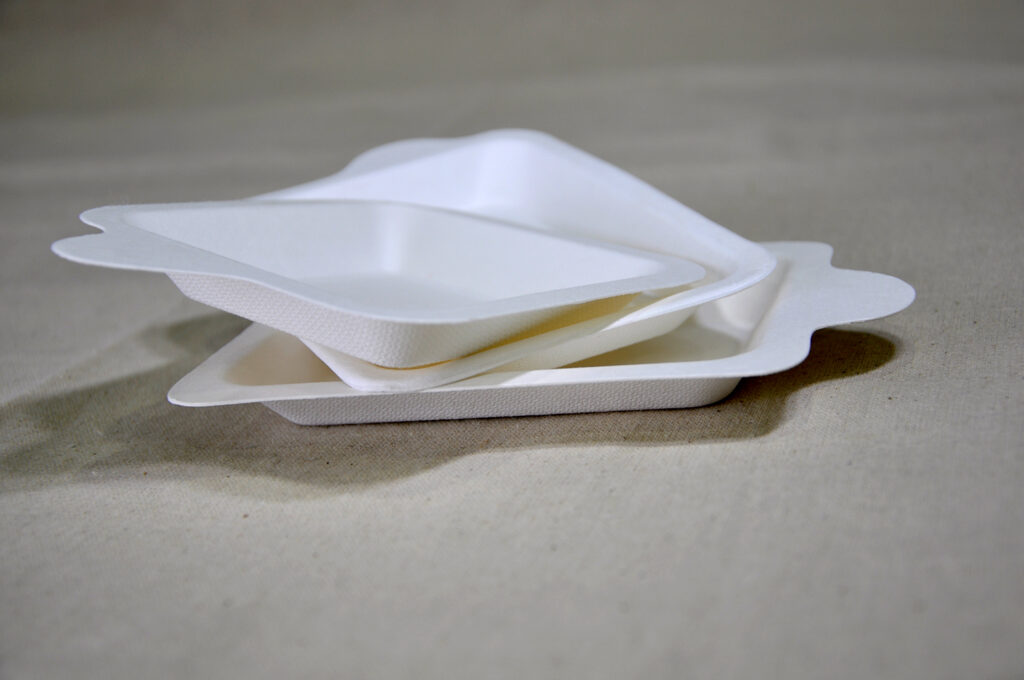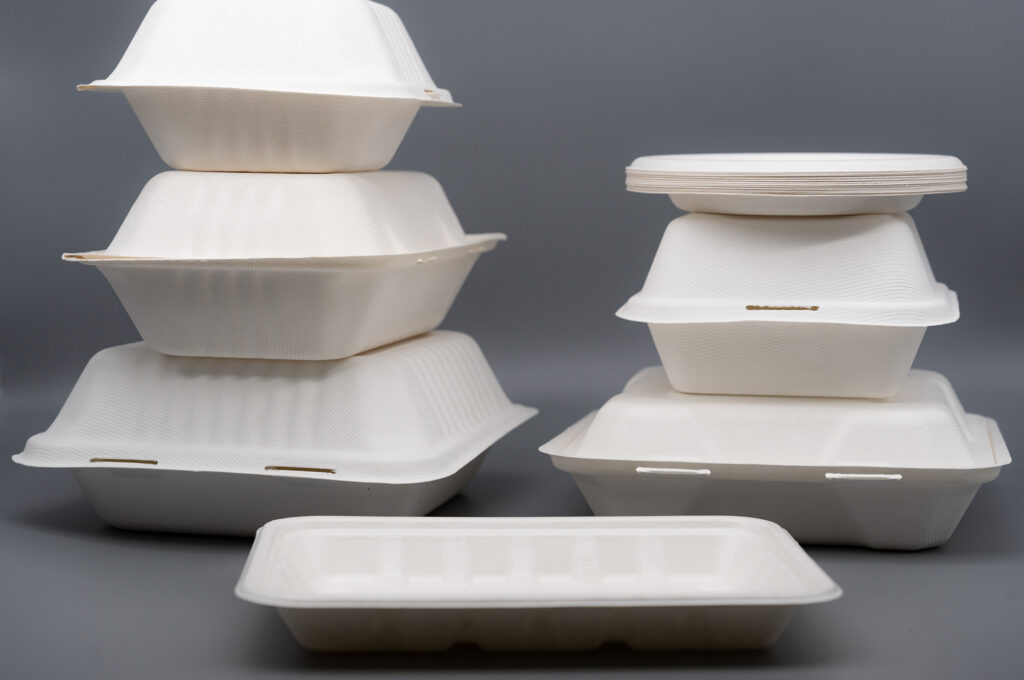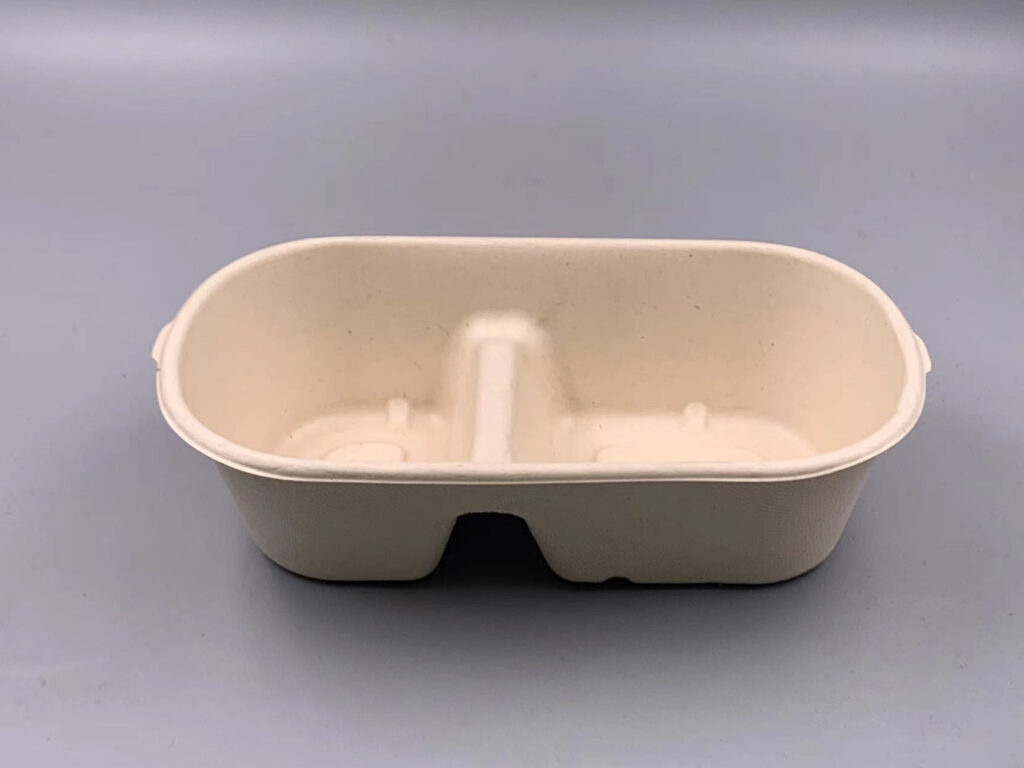Top 10 Benefits of Compostable Clamshell Containers
1. What Are Compostable Clamshell Containers?
Compostable clamshell containers are an eco-friendly choice for food packaging. They have a hinged lid and are designed to replace styrofoam and plastic boxes in the food industry. They are made from plant-based and renewable materials such as sugarcane bagasse, wheat straw fibre, cornstarch (PLA), or bamboo fibres.
Compostable containers are a great alternative to plastics. Regular plastics can stay in landfills for over 400 years. In contrast, certified compostable containers break down into nutrient-rich soil in just 90 to 180 days. They meet strict standards like ASTM D6400 or EN 13432 and are often verified by groups like BPI. This process leaves no harmful microplastics behind.
These containers are widely used by restaurants, catering services, food trucks, and takeaway businesses as part of their sustainability programs. They are suitable for both cold foods and hot meals (when made from durable fibre materials such as bagasse) and are valued by eco-conscious consumers who want packaging that is safe, renewable, and aligned with global plastic ban regulations.
2. Compostable vs. Biodegradable vs. Traditional Clamshells
| Feature | Compostable Clamshells | Biodegradable Clamshells | Traditional Plastic Clamshells |
|---|---|---|---|
| Material | Plant-based (bagasse, PLA, bamboo) | May be plant or petroleum-based | Petroleum-based |
| Breakdown Time | 90–180 days (compost facility) | Months to years | 400+ years |
| Residue | None, returns to soil | May leave microplastics | Permanent pollution |
| Certifications | BPI Certified, ASTM D6400, EN 13432 | Often no strict standards | None |
| Eco Impact | High positive | Medium | Negative |
Quick Tip: Compostable means it must meet strict BPI, ASTM D6400, or EN 13432 standards, while biodegradable simply means it will eventually break down—without guaranteeing environmental safety.
3. Why You Need to Use Compostable Clamshell Containers – Top 10 Advantages
| Advantage | Key Takeaway |
|---|---|
| Reduced Waste & Lower Environmental Impact | Cuts landfill waste by up to 70% and reduces greenhouse gas emissions. |
| Made from 100% Renewable, Plant-Based Resources | Produced from bagasse, PLA, or bamboo; renewable and sustainable. |
| Certified Food-Safe & Chemical-Free | BPA-free, PFAS-free, FDA & EU compliant; safe for hot, oily, and acidic foods. |
| Strong Branding & Customisation | Can be printed or embossed with eco-friendly inks for brand promotion. |
| Compliance with Plastic Ban Regulations | Certified to BPI, ASTM D6400, EN 13432; helps businesses meet global laws. |
| Heat, Oil & Moisture Resistance | Handles up to 120°C (248°F); leak-proof, microwave-safe performance. |
| Supports Corporate Sustainability Goals | Helps brands meet ESG/CSR commitments and boosts eco reputation. |
| Encourages a Circular Economy | Returns nutrients to the soil; supports composting programs & events. |
| Convenience Without Compromise | Lightweight, stackable, and delivery-friendly with no workflow disruption. |
| Durable for Real-World Use | Strong enough for heavy meals and transport; matches or exceeds plastics. |
3.1 Reduced Waste & Lower Environmental Impact
Every year, billions of plastic takeout containers end up in landfills, taking centuries to break down.
By switching to compostable clamshell containers, restaurants and food suppliers can divert up to 70% of their packaging waste from landfill to compost facilities.
These containers break down into organic matter that can be returned to the soil, helping reduce greenhouse gas emissions from decomposing plastics.
3.2 Made from 100% Renewable, Plant-Based Resources
Unlike petroleum-based plastics, compostable clamshell packaging is made from renewable crops such as sugarcane bagasse, cornstarch (PLA), or bamboo fibres.
These raw materials regenerate annually, reducing dependency on fossil fuels and supporting sustainable agriculture.
China’s compostable clamshell containers manufacturer supplies these products globally to meet growing demand.
3.3 Certified Food-Safe & Chemical-Free
All reputable compostable clamshells are BPA-free and PFAS-free, making them safe for direct food contact.
They comply with FDA and EU food safety regulations, ensuring that hot, oily, or acidic dishes don’t leach harmful substances into the food.
This makes them ideal as Compostable Clamshell Containers for Hot and Oily Foods.
3.4 Strong Branding & Customisation Opportunities
Compostable clamshell take-out food containers can be custom-printed or embossed with brand logos and designs using eco-friendly inks.
This helps restaurants and caterers promote a sustainable brand image while maintaining product appeal.
3.5 Compliance with Global Plastic Ban Regulations
Many countries and cities, including Canada, the EU, and parts of the USA, are implementing single-use plastic bans.
Compostable clamshells certified to BPI, ASTM D6400, or EN 13432 standards allow businesses to stay ahead of regulations and avoid potential fines.
3.6 Heat, Oil & Moisture Resistance
Premium compostable clamshell containers can withstand temperatures up to 120°C (248°F), making them suitable as microwave-safe compostable containers.
Their oil-resistant surface prevents leaks and sogginess, even with greasy or saucy dishes.
3.7 Supports Corporate Sustainability Goals
Using compostable takeout boxes helps companies meet ESG targets and CSR commitments.
Publicly sharing packaging changes can strengthen customer loyalty and improve a brand’s environmental reputation.
3.8 Encourages a Circular Economy
When collected and processed properly, compostable clamshells return nutrients to the soil as compost, closing the loop on packaging waste.
This supports local composting programs and promotes sustainable compostable packaging for events, catering, and community initiatives.
3.9 Convenience Without Compromise
Compostable clamshell packaging is designed to fit seamlessly into existing food service operations.
They are stackable, lightweight, and compatible with delivery services, so switching from plastic doesn’t require major workflow changes.
3.10 Durable Enough for Real-World Use
Despite being plant-based, modern compostable clamshells are structurally robust.
They can hold heavy meals, resist deformation from steam, and protect delicate foods during transport—matching or exceeding the performance of traditional plastic clamshells.
4. Common Usage Scenarios
4.1 Events & Catering
Large-scale gatherings such as weddings, corporate events, and music festivals generate massive amounts of single-use packaging waste. Using compostable packaging for events helps organisers cut landfill contributions while complying with local single-use plastic restrictions. Caterers highly value certified compostable containers. These containers are made from sugarcane bagasse or wheat fibre. They are sturdy enough for buffet-style meals. At the same time, they are safe for disposal in commercial compost facilities.
4.2 Home Use & Takeaway
From family leftovers to restaurant deliveries, eco-friendly clamshell containers have become a practical alternative to styrofoam boxes. Food trucks and takeaway businesses increasingly prefer compostable options because they not only withstand transport but also appeal to eco-conscious customers who actively seek out sustainable dining experiences. By switching to certified compostable clamshells, restaurants also demonstrate compliance with global plastic ban regulations while improving their green brand image.
4.3 Specialty Food Applications
Different foods require different packaging strengths, and compostable clamshells are designed to cover all:
-
Hot and oily foods (e.g., fried chicken, curries, pasta): Best served in fiber-based containers like sugarcane bagasse, which are leak-resistant and durable. (compostable clamshell for hot food)
-
Cold dishes and salads (e.g., sushi, poke bowls, fresh greens): PLA-based clamshells offer clarity and freshness but should be limited to cold applications since they soften above 105°C.
-
Dry goods and pastries (e.g., bread, muffins, cookies): Lightweight bagasse or wheat straw clamshells are ideal for baked goods, protecting freshness without excess packaging.
By matching the right material to the right food type, restaurants ensure both performance and sustainability.
4.4 Meal Prep and Food Storage
Compostable clamshell containers are widely used by meal prep companies for portion control, refrigerated storage, and freezer applications. Their durability makes them suitable for weekly meal plans, while their compostability reassures health-conscious consumers that the packaging won’t end up as long-term plastic waste.
Global demand is strong—China’s compostable clamshell containers for sale are shipped in bulk to distributors and wholesalers worldwide, ensuring consistent supply for businesses seeking large-scale eco-friendly packaging solutions.
5. Conclusion
Compostable clamshell containers are more than just food packaging—they are a smart business choice for restaurants, catering services, and eco-conscious brands.
They meet BPI, ASTM D6400, and EN 13432 compostability standards, reduce waste, and maintain high performance in real-world use.
If you are in the food service, packaging supply chain, or eco-product distribution, now is the time to make the switch.




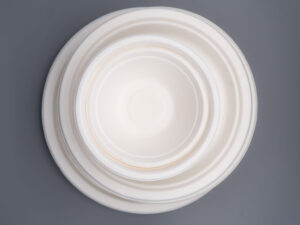
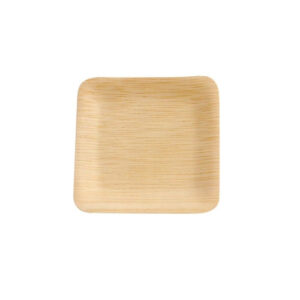
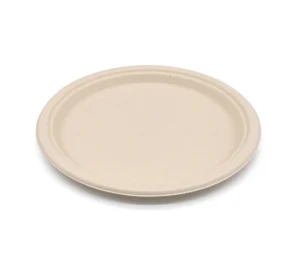
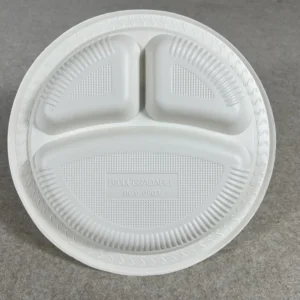
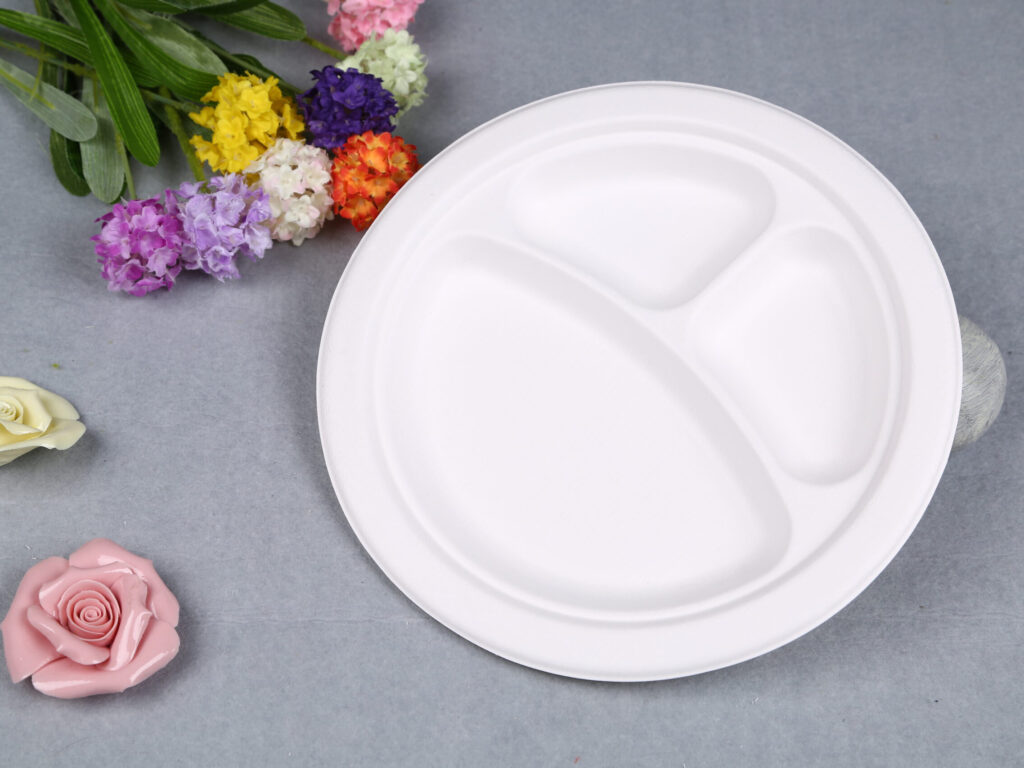
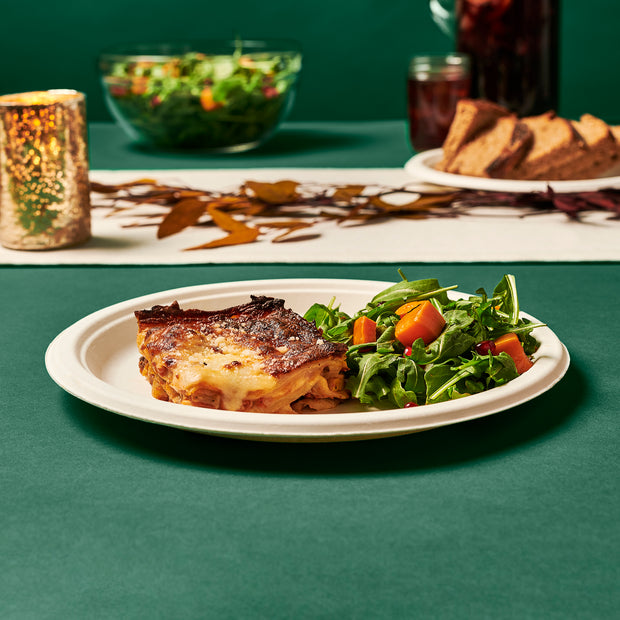 Now, let's talk about compostable. This term is much more specific and holds a higher standard for environmental responsibility. For a product to be labeled "compostable," it must meet strict requirements for breaking down into organic matter, water, and carbon dioxide within a specific timeframe, under specific conditions.
Think of it this way: compostable plates and cutlery are designed to decompose fully and safely into nutrient-rich compost, which can then be used to enrich soil. This process typically requires an industrial composting facility, where conditions like temperature, moisture, and aeration are carefully controlled to accelerate decomposition.
Here are the key characteristics of compostable products:
Now, let's talk about compostable. This term is much more specific and holds a higher standard for environmental responsibility. For a product to be labeled "compostable," it must meet strict requirements for breaking down into organic matter, water, and carbon dioxide within a specific timeframe, under specific conditions.
Think of it this way: compostable plates and cutlery are designed to decompose fully and safely into nutrient-rich compost, which can then be used to enrich soil. This process typically requires an industrial composting facility, where conditions like temperature, moisture, and aeration are carefully controlled to accelerate decomposition.
Here are the key characteristics of compostable products:
